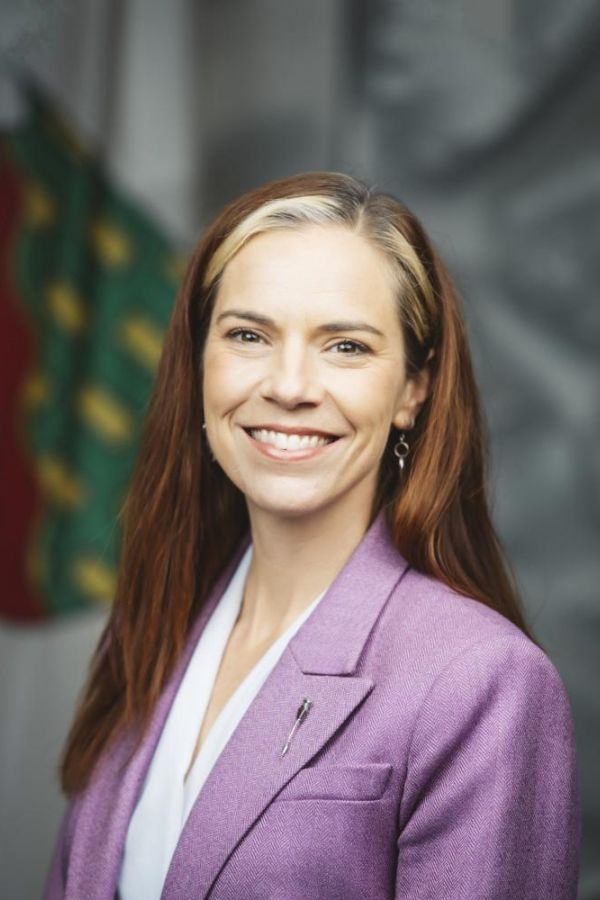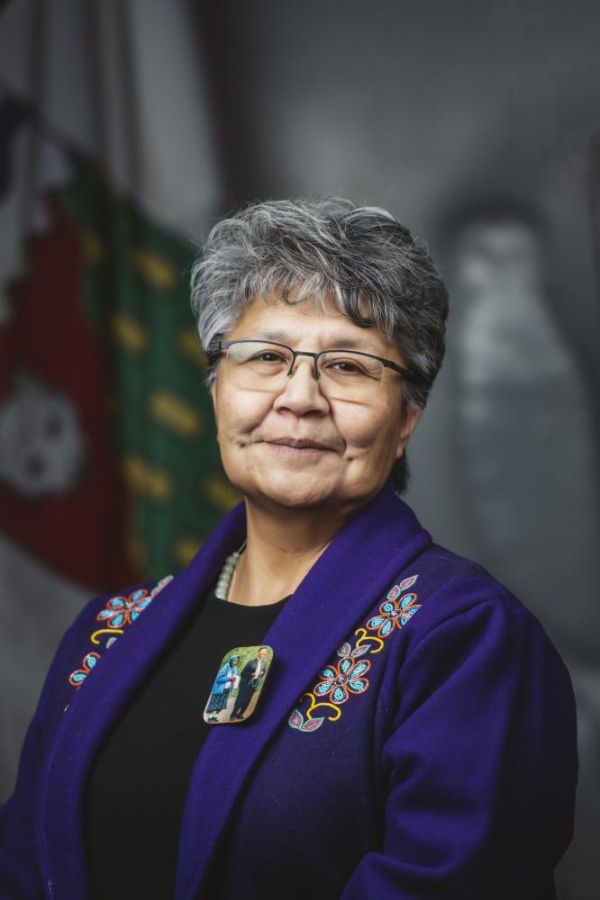Debates of February 28, 2022 (day 98)

Thank you. Mr. Martin.
Thank you, Madam Chair. As the Minister mentioned, the Housing Corporation is in the design revisit phase here, and we do have dollars set aside for the design work that has to be undertaken in this area. We're also looking at the program aspects related to this investment. The multigenerational home is a fourbedroom home. The program outcomes certainly look attractive; however, we're not quite sure it's really aligned to the appropriate program. Right now, it's targeting homeownership and an investment of that size might not necessarily be the right solution for a singlefamily home. So we're looking at other program options as well in this process, and we expect to provide committee with an update later in the coming year. Thank you, Madam Chair.

Thank you. Member for Frame Lake.

Nothing further, thanks, Madam Chair.

Thank you. Are there any further questions under programs and district operations? Member for Yellowknife North.

Thank you, Madam Chair. I'm looking at the page 390 lease commitments, $14 million. Can I just get clarification whether the Housing Corporation in order to enter into leases has to go to FMB for approval and whether this $14 million commitment applies to our debt line? Thank you.

Thank you. Minister responsible for NWT Housing Corporation.
Thank you, Madam Chair. I'll have vice president Jim Martin respond. Thank you.

Vice president Jim Martin.
Thank you, Madam Chair. Right now, these leases are of a shorter term in nature. Like, they go up to about five years in a number of cases, and they are considered operating leases at this time. So they are reflected as an O and M expenditure. They're not a longer term capital lease scenario and if that was the case, then that would have affect the debt calculations of the corporation and then ultimately the debt calculations for the GNWT. Thank you, Mr. Chair.

Thank you. Member.

Thank you, Mr. Chair. I guess before I leave, I just want to get a bit into this problem of, you know, we go out, we design a house for homeownership; it comes in far above the budget and a problem that is likely not getting better. I was hoping I could have the department speak to whether that design process was modular or stickbuilt and perhaps just generally whether we are heading in the direction of doing all modular building. Thank you.

Thank you. Minister.
Thank you, Mr. Chair. The design was stickbuilt. Thank you, Mr. Chair.

Thank you. Member.

Yeah, and I know the Housing Corp traditionally, and I understand, had a preference for stickbuilt. We're seeing a lot more modular units because, you know, with stickbuilt, you can kind of train apprentices and train more people. But can we get some updated figures on, you know, what it costs to deliver modular housing versus stickbuilt housing? Thank you.

Minister.
Thank you, Mr. Chair. One of the things that I was able to discover with the between the stickbuilt and the modular was the maintenance and the efficiency of it. We've delivered modular units to Nunakput and ended up with significant damages because of the houses being delivered by barge on the ocean. We've seen where we've had them up in the High Arctic communities where there's the weather conditions are are stronger, I guess, and we end up with a lot more operation and maintenance for those units.
And the Member is right as well too, that if we're looking at stickbuilt there is an opportunity there for education and training as well. Thank you, Mr. Chair.

Thank you, Minister. Member.

Yeah, thank you, Mr. Chair. No, I appreciate the Minister's comments there. But I know at times there have been different public numbers kind of reported. I was hoping to just get some updated figures. I know with the 90 housing unit delivery, the vast majority are modulars is my understanding; in fact I think that was a requirement of the federal rapid rehousing program. So I'm just wondering if we could get you know, if we build something modular, how much does it cost versus stickbuilt, a figure. Thank you.

Member. Minister.
Thank you, Mr. Chair. There is a significant difference in building the stickbuilt, but it's also the operation and maintenance and the climate that we're actually building those units in and if we're placing those modulars in those specific areas. So it depends on where the delivery will be taking place, north or south of the territory. Thank you, Mr. Chair.

Thank you, Minister. Member.

Thank you, Mr. Chair. Yeah, I'll try another time to get a numerical value there.
I guess my other question is I expressed earlier some concern about what LHOs do verse well, the Housing Corporation, and I think I would express those same concerns with what district sorry, what I don't know what to call it offices do verse LHOs. I get at some point, we want to have people in the community who are making decisions about housing and we want to have jobs in communities. But, you know, in Yellowknife, for example, we have a North Slave office, and we have a headquarters office, and then we have the Yellowknife Housing Authority office. And I really don't think we need all three. In fact, I think we probably just need one where you could go and talk about housing instead of three spots. And they all come with duplicative costs. I see there's multiple line items for their leases for their offices here. And I've had people go to the housing authority and say hey, can I have access to this program and they say, no, no. You go to you go to the North Slave office. And then they go to the North Slave office and they say no, no, you go to headquarters for that. So I I guess as part of this review, the Housing Corporation, my understanding does not need to organize itself like a department at all. It doesn't need to follow north and south and Slave and all of the ways that departments organize, and it doesn't need LHOs if it doesn't want to have them. Can look into whether there's some efficiencies on having both, you know, a district office and an LHO doing relatively similar things; is that something on the agenda? Thank you, Mr. Chair.

Member. Minister.
Thank you, Mr. Chair. I am you know, I'm more in support of having these positions in the smaller communities and building capacity at the smaller community level. We are in a different I want to say time of this government where we see Indigenous groups coming forward and looking at their selfgovernment agreements. I look at this as an opportunity if they were wanting to draw down jurisdiction, I'm wanting to entertain a pilot project with them as well too. But the difference of having the LHOs, those are specifically for public housing and those administrations at the smaller community level, but the district offices are emergencies and programs and they do support the LHOs as well too. But in our review, we will be looking at the whole the whole function of how we deliver housing throughout the territory. But I could reassure the Member that the local housing authorities are an asset to our delivery, and they are an asset to how our program is being delivered. They are the facetoface for us at the ground level. Thank you, Mr. Chair.

Thank you, Minister. Member.

Yeah, thank you, Mr. Chair. Can I get an explanation of I see that the regional offices are responsible for maintenance, but I know that the LHOs are also responsible for maintenance. And, you know, if I'm in a housing unit and I want something want some maintenance, which one of those two should I go to in which scenarios? Thank you.

Thank you, Member. Minister.
Thank you, Mr. Chair. And like I had said, the local housing authorities are for public housing. The district offices are programs and maintenance. So if you're a homeowner, you would go to the district offices. They provide the support for the LHOs and the LHOs are strictly are for public housing. Thank you, Mr. Chair.

Member.

Thank you, Mr. Chair. And then I also in this kind of realm of who does what, there's a capital plan coming forward and this year's this budget's capital plan doesn't build any new houses, but it does quite a bit of major retrofits. My understanding is that major retrofits is the decided by headquarters in their capital plan, and then minor maintenance would be the responsible of the LHO. Can I just get a understanding of when maintenance belongs to an LHO verse would have to go through the headquarters capital planning process. Thank you.

Minister.
Mr. Chair, the maintenance would be for the public housing units but if we have something like a boiler needs to be fully replaced, we have a major freezeup where we need the certification of plumbers and OBMs to be in the communities, then we're looking at the major retrofits compared to sorry, I forgot the other term. Thank you, Mr. Chair.

Thank you, Minister. Member. Ms. Nokleby? No? Ms. Semmler?

I want to ask questions under the next section.

There's no further questions. Okay, no further questions. So there's additional information on page 390 which is lease commitments. Any questions? Ms. Semmler.

Thank you, Mr. Chair. My questions are, you know, during the beginning of the week I talked about in my Member's statement on the amount it cost to lease the units in the one apartment building, and then looking at the lease commitments in the Inuvik for the housing, there's 36 units and one unit on one line, and then there's ten units on the next line. And that total for the two is about $970,000. And it says the 20222023 main estimates. But then it says future lease payments, and there's 20 2.9 million and .98 million, which is a total of 3.8 8 million. Can you clarify this year, is that our total cost for those 45 units that we're leasing? Thank you, Mr. Chair.

Thank you, Member. Minister.
Thank you, Mr. Chair. I'll have vice president Jim Martin respond. Thank you.

Mr. Martin.
Thank you, Mr. Chair. Yeah, so those two line items, the current year annual operating costs for those in 20222023 is 726,000 as noted, and 245,000 for the second building. The amount shown in future lease payments is the projected total cost over the life of those leases. Thank you, Mr. Chair.

Thank you, Mr. Martin. Member.

Okay, thank you, Mr. Chair. So can you clarify what's the total life of those leases? If that's a year by year? Does it end at our fiscal year? Is this a five year? Thank you, Mr. Chair.

Thank you, Member. Minister.
Thank you, Mr. Chair. I'll have vice president Jim Martin respond. Thank you.

Mr. Martin.
Thank you, Mr. Chair. For the first item, it's under five years. And the second one, it'd be about approximately four years. Thank you, Mr. Chair.

Thank you, Mr. Martin. Member.

Yeah, thank you, Mr. Chair. So my and I think this is the issue that I've been raising, and I know that the Minister had mentioned in the House that there's no capital, but then this gets really confusing for I'm not a finance person. So we've got a crown corporation but we the buildings that we want to if we want to house people, we need we need the houses. So those become capital but we're paying, you know, a million dollars a year to house 40 you know, to have 45 rental units just in Inuvik. That's just in Inuvik, which is double the cost of the then I think in Yellowknife, if you look at it, 65 units is 1.2 for 65 units. You know, so we're paying we're paying some crazy amounts for rent up in the North and, you know, my colleague from Yellowknife North has mentioned this over and over again about how we're giving all the money to these southern companies, and I just feel that, you know, with the amount of units that we're spending this O and M money that we could potentially in the future have a building because we also have the college who's leasing units for residents that are coming in families that are coming in for the college.
So will the Minister explain, like, what's the with these leases and with the future plan of trying to come up with a plan in especially in my community of Inuvik where we have a hundred people still on the waitlist yet we're leasing for 45 families units, what's the plan and how are we going to continue to, you know, pay for this when we're renting out whole apartment buildings instead of it's cheaper to own and operate an apartment building ourself. Thank you.







